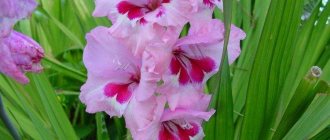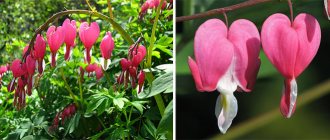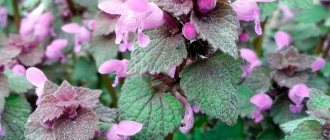general information
The evergreen perennial is a close relative of morning glory and other bindweeds. Its long, tenacious shoots grow up to 1.5 m and form a continuous carpet on any surface. In addition, dichondra also blooms in summer.
The root system matches the above-ground part - superficial and creeping. Dichondra quickly grows in breadth because its shoots self-root during growth. The small leaves resemble coins with a diameter of 0.5 to 2.5 cm.
Photo: sad6sotok.ru
Botanical description
Dichondra is an evergreen perennial native to the tropical and subtropical forests of East Asia, America, New Zealand and Australia.
The genus has only 10 species and belongs to the Convolvulaceae family, but most often only two of them are grown. The plant's closest relatives are bindweed, morning glory and calistegia.
Structure:
- dichondra is a creeping flower with a superficial root system;
- the plant has very long stems, reaching 1-1.5 meters, the bush itself is not tall - about 15 cm in height;
- flowering period from May to August;
- the flowers are small - about 0.2-0.3 cm;
- The color of the petals can be different: light yellow, purple or light green.
- the leaves are small, round, their color depends on the variety and can be deep green or silver.
If the winter is cold, the flower is grown as an annual. In warm climates, dichondra can grow for many years; besides, an indoor flower can be placed on a balcony, terrace, or planted in open ground for the summer.
Types of dichondra
With all the variety of dichondra species in nature, gardens, on balconies and apartments, only one species is grown - a waterfall. More specifically, these two varieties!
Emerald Falls
A green variety, the size of its leaves depends entirely on the lighting. Moreover, in partial shade they grow larger. In summer, this dichondra blooms with tiny greenish flowers.
Photo: sadik-i-ogorod.ru
Silver Falls
This is the same gray dichondra with long flowing shoots. Its lashes are longer than those of the Emerald Falls, but at the same time not as lush. The variety is surprisingly unpretentious, but requires bright lighting.
Photo: domashniecvety.ru
Kobeya (50 photos): types, cultivation and proper care
Reproduction methods
Emerald Falls is propagated both by seeds and by vegetative methods. In the latter case, two methods are used:
- Cuttings. Young shoots of the plant are cut off at the tops at the beginning of summer. The resulting cuttings up to 8-10 cm long are treated with a root formation stimulator and planted in a moist nutrient substrate. After new shoots begin to grow, the crop is transferred to open ground.
- Layerings. When growing dichondra as a ground cover, a healthy and strong stem of the plant is buried in the ground in the middle part and watered abundantly during the summer. Closer to autumn, the cuttings can be disconnected from the main bush and moved to a new location.
The division method for dichondra Emerald Falls is not usually used. The culture is growing rapidly, and digging it out of the ground entirely is quite difficult. In addition, the resulting divisions are highly likely to not take root.
Dichondra care
Dichondra is a southern resident, so all the subtleties of care are connected precisely with this. She is accustomed to the tropics and subtropics, so she needs sun, warmth and moisture.
Temperature
Comfortable temperature for dichondra is 16-26 degrees. If you bring it indoors for the winter, keep in mind that it needs a rest period at temperatures up to 15 degrees without fertilizing.
Photo: domashniecvety.ru
Lighting
For silver waterfall, lighting is a fundamentally important point, because it simply does not grow well in the shade. But the green one feels comfortable in different conditions, and only the appearance of its leaves changes.
Photo: fabrikacvetov.ru
Watering
Moderate watering and moderate humidity are very important for dichondra. Any extremes are bad here. In addition, you need to water the plant in the evening, otherwise burns may remain on the leaves. In the morning, Dichondra loves to be sprayed.
Photo: fermer.ru
The soil
Dichondra grows in almost any soil, but loam with good drainage suits it best. Let the earthen coma dry out, but not dry out. Otherwise, in the first case, the roots rot, and in the second, they die.
Photo: zooby.by
Fertilizers and fertilizing
Dichondra grows leaf mass very intensively, so nitrogen fertilizers cannot be avoided. You can alternate organic and mineral mixtures once a week.
Photo: proraboff.rf
Trimming
To form a thick and beautiful crown, it will have to be gradually trimmed. To stimulate branching, pinch the main shoots at a height of 7-8 cm.
Photo: grinagri.rf
Wintering
There are two options here. In southern latitudes, dichondra overwinters in the ground under film and leaves, and does not cause problems. And in the north it is simply grown as an annual plant, because even during the season it grows impressively. But it can be transplanted into a flowerpot together with a lump of earth and left to winter in a dark basement until spring.
Photo: domashniecvety.ru
Sedum (60 photos): types, proper care, planting and growing
Dichondra as a houseplant Care and replanting of dichondra in an apartment
Dichondra silver waterfall growing at home photo
The flower is often grown as a houseplant. Caring for this beauty is simple: timely, regular watering (without excess) and sufficient lighting. The air temperature in the room is quite comfortable for the plant; you should not allow it to drop below 10 °C. There are no special requirements for air humidity. The plant responds well to feeding in the spring and summer with a frequency of 1-2 times a month. Use complex fertilizers for decorative foliage plants according to the manufacturer's instructions. The soil for planting is nutritious, with a slightly acidic reaction.
It perfectly tolerates proximity to other flowers, which is used to create spectacular compositions. Dichondra is usually planted along the edge of a voluminous pot, creating a cascading waterfall of leaves that shades decorative flowering plants.
Over time, the space for the dichondra becomes small, and it becomes necessary to transplant it into a larger container. If necessary, the flower is replanted using the transshipment method - when the roots tightly entwine the earthen lump in the pot. The signal for this operation is the appearance of roots from the drainage holes of the flowerpot. To do this, select a larger container, on the bottom of which expanded clay is placed, sprinkling it with a small layer of soil on top.
Planting and propagation of dichondra
You can grow dichondra from seeds, but it takes too long. It is easier to use layering and cuttings. The cuttings take root in water and within a week grow roots for planting in peat and sand. For greater bushiness, 3 cuttings are planted in one flowerpot. When they finally get stronger and grow up, they can be moved to the garden.
Reproduction by layering takes place directly on the ground, and often spontaneously. The shoots grow overgrown with lateral roots and quickly become established if you simply bend them to the ground and dig them in lightly. In just a couple of weeks, such layering can be planted.
Seeds are planted in the first half of winter in several pots at once to a depth of about 8 mm. They need to be moistened, covered with film and left in a bright place at 22-24 degrees. Most likely you will need phytolights.
As 2 leaves appear, the seedlings can be planted, and the film is removed when they grow to 8 cm. This is all a very long process, and its success directly depends on the temperature and lighting conditions. When the sprouts grow to 15 cm, they are transplanted to the main place. In the process, do not forget to pinch the tips of the shoots for branching.
Photo: fastbox.su
Dichondra in landscape design and as a hanging plant for decorating facades
Dichondra in an ampel composition with other flowers photo
Growing dichondra in landscape design and indoor floriculture is mainly used for vertical decoration of exteriors and interiors. It is planted in hanging baskets and flowerpots with the ability to grow and cascade into waterfalls of picturesque shoots. It is often used for background landscaping, incomparably shading colorful compositions with its foliage. They even create original sculptures from it. A frame is made from wire, and the dichondra braids it, resulting in an incomparable creation.
Loading…
Pest and disease control
By its nature, dichondra is an ordinary weed, so it is not affected by pests and diseases. The only parasite that poses a serious threat is nematodes, which are difficult to notice and useless to fight. If the problem has already been discovered, such plants need to be removed quickly, the soil should be disinfected and nothing should be planted in this place in the near future.
Photo: 1poin.com
Gladioli (50 photos): types, proper care and cultivation
Planting seedlings in flowerpots
Dichondra is planted in pots at the end of May - beginning of June, when warm weather sets in. In colder climates, the transplant period is postponed to mid-June. A layer of drainage must be placed at the bottom of the pot or flowerpot.
Growing and caring for dichondra is not complete without pruning. To give the shoots shape and increase their density, pinching is done periodically. In summer, such procedures are carried out approximately once every two weeks.
Remember : the minimum winter temperature at which a plant can be grown is 10°C.
Dichondra – photo
Dichondra can be used in a very original way to decorate a site and in various landscape compositions. Catch the most beautiful and original ideas!
Photo: rossoshru.ru
Photo: pocvetam.ru
Photo: id.designideashome.com
Photo: oir.mobi
Photo: instagram.com
Photo: pibig.info
Photo: pinterest.ru
Photo: urban-land.ru
Photo: 2110658.ru
Photo: commons.m.wikimedia.org
Photo: fastbox.su
Photo: proraboff.rf
Photo: proraboff.rf
Photo: pinterest.ru
Photo: fermilon.ru
Photo: pocvetam.ru
Photo: gardening-forums.com
Photo: komnatnyecvety.ru
Photo: nz-david.blogspot.com
Photo: distano.ru
Photo: distano.ru
Photo: krsk.au.ru
Photo: rastenieinfo.ru
Did you like the post? Subscribe to our channel in Yandex.Zen, it really helps us in our development!
Transplantation into the ground
Dichondra ampelous, unlike groundcover, is planted in pots of different sizes, decorative baskets or other containers with soil located above ground level. This is done no earlier than 2 months after the appearance of the first shoots. In warm regions of the country, the best time to plant an ampel flower is May, and in cool regions - June.
Dichondra ampelous is a light-loving plant, but it takes root well not only in areas exposed to sunlight, but also in diffuse shade. So, if the silver variety is ideally placed in a sunny area, then the emerald variety will also feel comfortable near trees.
There are no special requirements for the composition of the soil, but ampelous dichondra grows better on loamy, drained soil.
In the process of planting seedlings, holes are made of such a size that the root system of the plant removed from the container with a lump of earth can be freely accommodated.
The seedlings are carefully moved from the container to the hole, covered with soil and moistened abundantly.
When planting ampelous dichondra in open soil, one should take into account its low growth rate. Therefore, for the plantings to look beautiful, the distance between seedlings should be no more than 10-15 cm.
Warning! In the first season, ampelous dichondra grows inactively and does not have time to build up a large vegetative mass. The plant will achieve good decorative appearance in 2-3 years of life.
The plant will achieve good decorativeness in the 2nd year.
Requirements for place and soil
Usually they try to plant the dichondra in a pot and leave it that way. However, if you want to place it in an open area, try to choose a place that is well protected from drafts. At the same time, do not forget that the emerald dichondra loves partial shade, and the silver one loves the sun. The soil must be well drained; there are no other requirements for it. And note: you need to plant a vine on the site when the temperature has settled within +20 degrees or more. In the southern regions of Russia this happens somewhere in mid-May, in the northern regions - in June. You need to choose a sunny day for planting, without rain.











